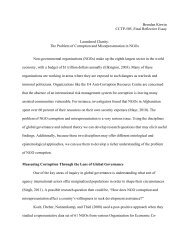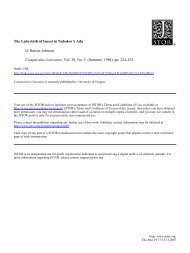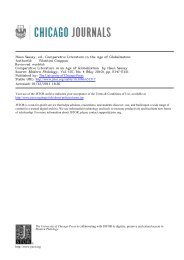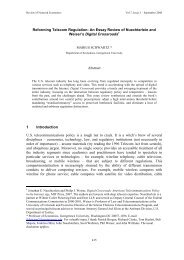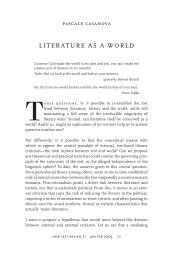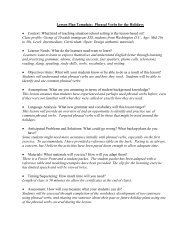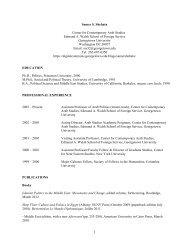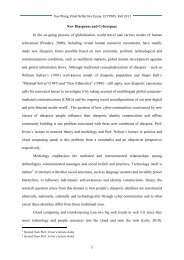Brand Tone of Voice:
Brand Tone of Voice:
Brand Tone of Voice:
- No tags were found...
Create successful ePaper yourself
Turn your PDF publications into a flip-book with our unique Google optimized e-Paper software.
J. Delin 11cations. In fact, the adoption <strong>of</strong> <strong>Tone</strong> <strong>of</strong> <strong>Voice</strong> is being investigated not justby commercial companies, but by charities and public sector bodies such asgovernment departments. The aim <strong>of</strong> the <strong>Tone</strong> <strong>of</strong> <strong>Voice</strong> is to engage peoplewith messages – perhaps about products and services they may wish to buy,but also about benefits and services that they are invited to take part in orclaim, such as pensions, tax credits, or advice, health services and screenings,safety information, and more. <strong>Tone</strong> <strong>of</strong> <strong>Voice</strong> differences can influence the mostmundane <strong>of</strong> communications such as forms, as the following examples fromthe <strong>Tone</strong> <strong>of</strong> <strong>Voice</strong> guidelines for a government department show:Don’t useapportioned accordinglyexpected confinementbona fideundertake toat such time ascommenceDo useworked out accordinglythe date your baby is duegenuineagree towhenstartExtensive ‘jargon busters’ such as these are frequently found in guidelines oncorporate <strong>Tone</strong> <strong>of</strong> <strong>Voice</strong>, particularly for applications such as forms, letters,and information leaflets. It is important to note, though, that avoiding jargonor over-formal language is not all there is to a <strong>Tone</strong> <strong>of</strong> <strong>Voice</strong>. For this particulargovernment department, consumer research that I undertook as part <strong>of</strong> a commercialcontract 8 showed that many people were perfectly happy with some <strong>of</strong>the more technical language that was normally used in relation to the subjectmatter – which meant that some ‘plain’ or ‘clear’ English terms were seen asover-simple and possibly patronising. People preferred complete to fill in, receiveto get, consecutive to in a row, inform and state to tell, and deduct to take <strong>of</strong>f ortake away. What was apparent was that they did not wish to see obvious ‘workarounds’in over-simple language to replace what was already understandable,and attitude research to the language revealed that they thought the simplestterms were just too friendly for a government agency – and therefore cameacross as false. For the same reason, consumers did not want to see contractionssuch as you’re and we’ll, and preferred please call us to give us a ring. They likedyou are likely to be entitled to a further amount, but found you can get more moneyactually <strong>of</strong>fensive, because they felt that they were being addressed as if they werenot only childish, but greedy. Given the nature <strong>of</strong> the ‘brand personality’ in thiscase, people preferred language that was ‘direct, but not too chatty’, ‘direct andaccessible, but still business-like’, and ‘not too pally’.It is important to note, therefore, that the development <strong>of</strong> a <strong>Tone</strong> <strong>of</strong> <strong>Voice</strong>is not the same enterprise as writing in Plain English, the logical conclusion<strong>of</strong> which is that all brands sound the same. Because <strong>Tone</strong> <strong>of</strong> <strong>Voice</strong> is aimed at



